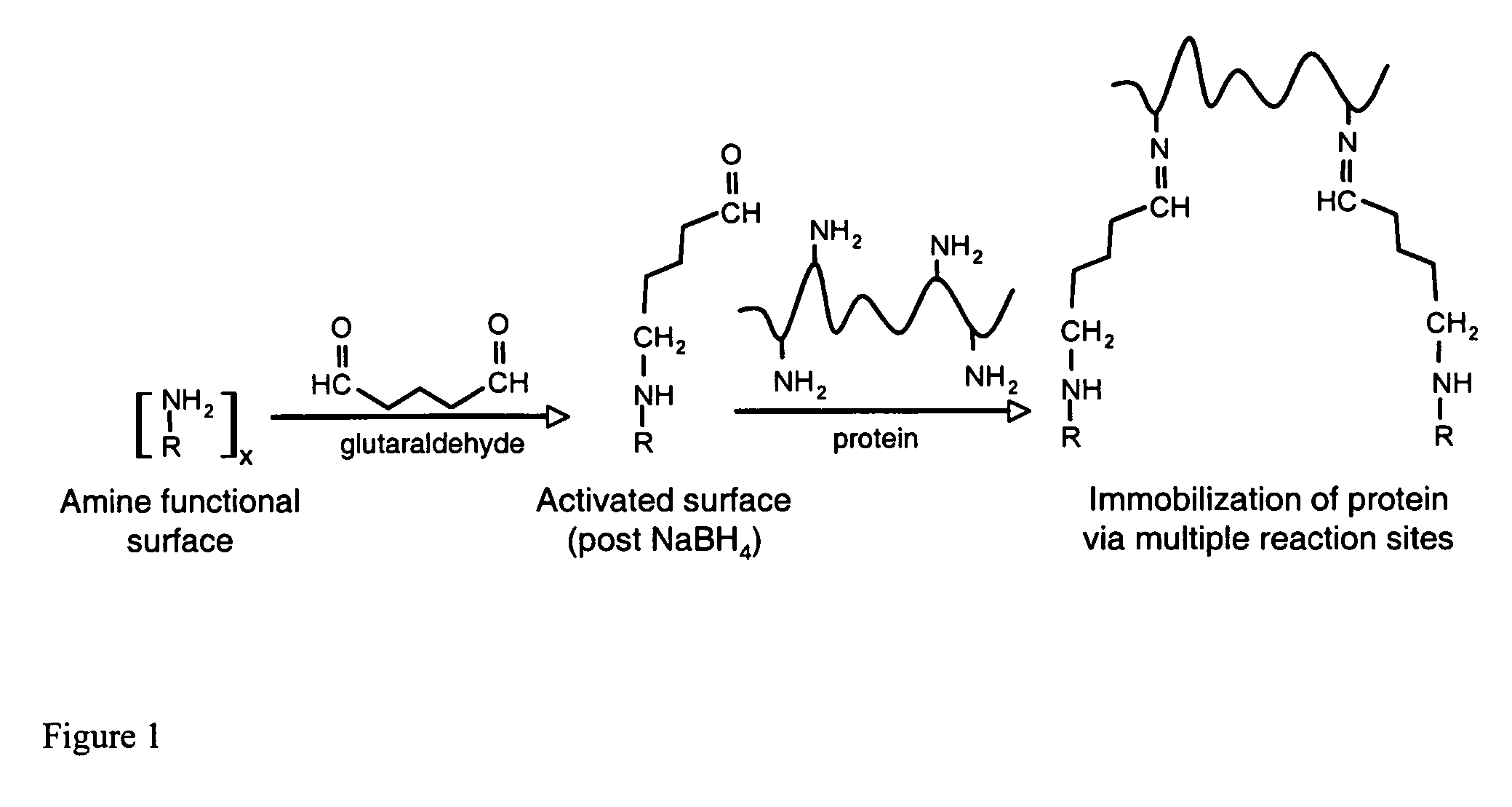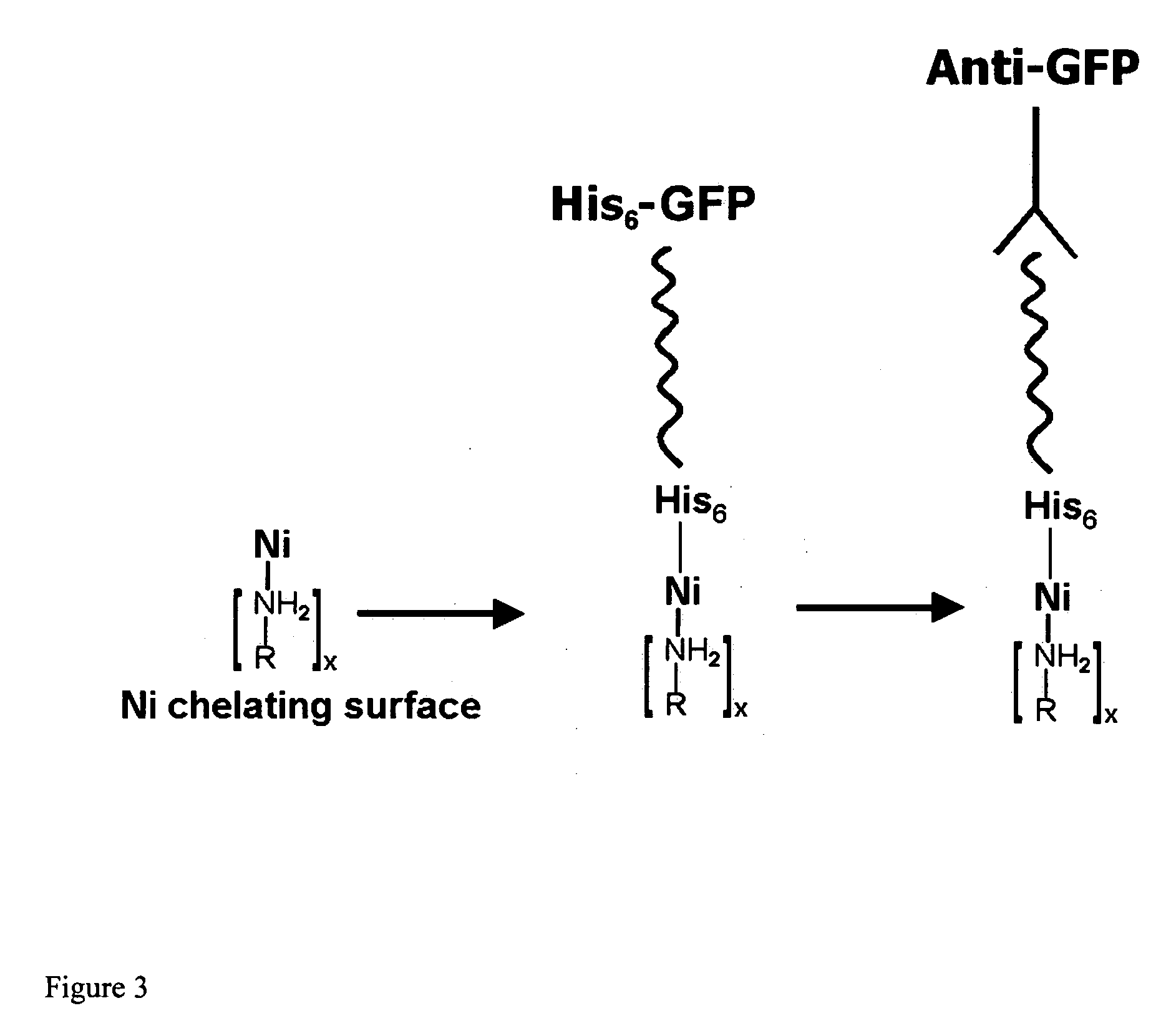Affinity membrane for capture of a target biomolecule and formation thereof by site-directed immobilization of a capture biomolecule
- Summary
- Abstract
- Description
- Claims
- Application Information
AI Technical Summary
Benefits of technology
Problems solved by technology
Method used
Image
Examples
Embodiment Construction
[0088] The site-directed orientation of capture biomolecules, particularly antibodies, on a membrane surface, requires a functional surface to which said biomolecules (or alignment biomolecules) can be attached using specific chemical interactions, such as chelation, coordination, or covalent reaction (FIG. 24).
[0089] Referring to FIGS. 10 and 11, the number of membranes 14 in stack 12 may be as few as two or as many as 100. The number of membranes in a stack depends largely on the number of targets sought to be identified in the sample. Each membrane is preferably coated with a different capture biomolecule specific to a particular target of interest.
[0090] The membranes 14 are preferably constructed of a thin, low-porosity porous substrates with straight-through pores that are coated with capture biomolecules. The substrate is preferably constructed of polycarbonate or a similar polymeric material that maintains sufficient structural integrity despite being made porous and very ...
PUM
| Property | Measurement | Unit |
|---|---|---|
| Specific volume | aaaaa | aaaaa |
| Specific volume | aaaaa | aaaaa |
| Specific volume | aaaaa | aaaaa |
Abstract
Description
Claims
Application Information
 Login to View More
Login to View More - R&D
- Intellectual Property
- Life Sciences
- Materials
- Tech Scout
- Unparalleled Data Quality
- Higher Quality Content
- 60% Fewer Hallucinations
Browse by: Latest US Patents, China's latest patents, Technical Efficacy Thesaurus, Application Domain, Technology Topic, Popular Technical Reports.
© 2025 PatSnap. All rights reserved.Legal|Privacy policy|Modern Slavery Act Transparency Statement|Sitemap|About US| Contact US: help@patsnap.com



